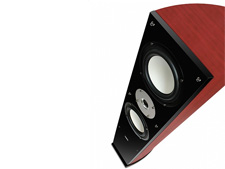It’s the time of year for saving money!
Audiophiles spend a lot of time thinking about what it means to be an audiophile, and what defines an audiophile. One leading magazine devotes the first page of every issue to just this topic. Often, the discussion devolves into ego gratification, on the order of “I am an audiophile, and anyone who disagrees with me on some audio-related topic is not.” But a recent discussion in a Facebook group got me thinking about the subject, and gave me an idea for defining an audiophile system — and by extension, an audiophile — that I think works pretty well.
 The discussion involved the Fluance XL7F, a $499/pair, 45-inch-high tower speaker packing an 8-inch woofer, two 6.5-inch midranges and a 1-inch soft dome tweeter. I got pulled into the discussion because I reviewed the XL7F a year and a half ago. I listened to it at length, measured its frequency response and took it apart to evaluate its crossover circuits. The XL7F is a great value: a nice-looking speaker that can deliver high-volume sound clearly and without overt tonal coloration. But I would argue that if you buy the XL7F, you’re not an audiophile.
The discussion involved the Fluance XL7F, a $499/pair, 45-inch-high tower speaker packing an 8-inch woofer, two 6.5-inch midranges and a 1-inch soft dome tweeter. I got pulled into the discussion because I reviewed the XL7F a year and a half ago. I listened to it at length, measured its frequency response and took it apart to evaluate its crossover circuits. The XL7F is a great value: a nice-looking speaker that can deliver high-volume sound clearly and without overt tonal coloration. But I would argue that if you buy the XL7F, you’re not an audiophile.
Here’s why: To get the price of the XL7F so low, the manufacturer had to compromise in several key areas. First, the speaker’s cabinet isn’t particularly stiff. While a solid, inert, non-vibrating cabinet may seem like one of those things speaker manufacturers advertise but that don’t really make a difference … well, just ask any respected speaker designer, even the most scientific and un-tweaky of them, about this subject and I guarantee they’ll explain to you how important it is that the cabinet contribute as little vibration and sound of its own as possible.
Second, the crossover points appear to be chosen to maximize the XL7F’s power handing (and therefore maximum volume) at the expense of its sound quality. For example, the downfiring woofer’s crossover uses a first-order (-6 dB/octave) low-pass filter speced at 800 Hz. Assuming the crossover spec is taken at the usual -3 dB point, that means the woofer’s down only -9 dB at 1.6 kHz, which is way up into the vocal range — and that much of the sound of voices will come from the floor. Likewise, the tweeter is crossed over to the midranges at 3.5 kHz, which reduces the demands on the tweeter but forces the 6.5-inch midrange drivers to reproduce frequencies at which they’ll tend to beam sound rather than broadly disperse it.
The XL7F buyer wants something that looks good, costs very little, pounds out plenty of bass and can be cranked up really loud. That’s a perfectly fine set of goals — after all, it’s 100% up to you to decide what kind of sound you prefer, and it’s nobody else’s damned business. If those are your goals, the XL7F is the best buy I’ve found. For a high-powered home theater system on the cheap, it’s tough to beat.
But Merriam-Webster defines an audiophile as “a person who is enthusiastic about high-fidelity sound reproduction.” In my opinion, that definition doesn’t fit the buyer of the XL7F, who’s choosing bass, volume and looks at the expense of midrange and treble fidelity.
What would an audiophile buy instead for $500/pair? Probably a good set of minimonitors, such as the $399/pair Music Hall Marimba. The Marimba can’t play as loud as the XL7F, doesn’t have anywhere near as much bass, and doesn’t even look as nice. But if you listen to both speakers, you’ll hear that the Marimba delivers a more natural and spacious sound — the “high-fidelity sound reproduction” that Merriam-Webster references in its definition.
So there it is: If you’d spend a $500/pair speaker budget on a high-quality pair of minimonitors instead of a big, bodacious pair of tower speakers, you’re an audiophile.
Does that make sense?





